Are Termites Blind? Unveiling the Truth about Termite Vision
Termites, those small yet industrious insects, have long been a subject of fascination and concern for homeowners and entomologists alike. Many wonder about their visual capabilities as these tiny creatures construct intricate tunnels and devour wood. One common question that arises is, “Are termites blind?” The interesting realm of termite vision will be explored in this essay, along with the reality behind this widely held belief.
Are Termites Blind and Deaf?
Are termites blind? It is a query that has aroused the interest of several people. Although termites have some eyesight, it is restricted. They can sense variations in light intensity because of their tiny, complex eyes.
However, their visual acuity and range are less developed than other insects. For navigation and communication, termites rely more on their other senses, such as touch and chemical signals. They locate food sources and organize duties inside their colony via pheromones.
So, while termites may not have the sharpest vision, they have adapted and thrived by relying on alternative sensory mechanisms. Termites do not have ears in the traditional sense, and they cannot hear sounds like humans or many other animals can. They lack the specialized organs for perceiving sound waves.
Instead, termites rely on other senses like touch, vibration, and chemical signals to communicate and navigate their environment. They are highly sensitive to vibrations, which allows them to detect movements and disturbances in their surroundings.
How Do Termites See? A Fascinating Guide to Their Vision
Have you ever wondered how do termites see the world around them? These tiny insects are known for their impressive building skills, but their way of looking at things is equally intriguing. In this easy-to-understand guide, we’ll explore the fascinating topic of termite vision and how these little creatures perceive their environment.
Understanding Termite Eyes
To understand how termites see, let’s take a closer look at their eyes. Unlike humans, termites have compound eyes made up of many lenses. We’ll explore how these eyes work and the advantages they provide for termites’ vision.
Adapting to Dim Light
Termites often live in dark and damp places, like inside wooden structures. So, how do they adapt to these dimly lit conditions? We’ll find out how termites are sensitive to light and how they make the most of their vision in these dark habitats.
Colors in a Termite’s World
For animals to engage with their environment, color is crucial. Discover how termites perceive colors and how it affects their behavior, like finding food and recognizing other termites in their colony.
Navigating Their World
Termites are social insects that live in colonies, and good navigation is vital for their survival. Learn about their impressive navigation skills, including finding their way and communicating with other termites to work together.
How Termites Communicate Through Sight
Communication is crucial for a successful termite colony. Explore how termites use visual cues to share important information with each other, like warning signals, directions to food, and signals for mating.
Comparing Termite Vision with Other Insects
Let’s compare how termites see things with other insects like bees and ants. By doing this, we can learn more about what distinguishes termite eyesight from that of other social insects. Termites may be small, but their way of seeing the world is extraordinary. By learning about their vision, we gain insights into their behavior and how they build and work together. The next time you come across termites, you’ll have a better appreciation for their remarkable sight.
Termites’ Vision: How Many Eyes Do They Have?
Many people are curious about termites and wonder, “How many eyes do termites have?” These hardworking insects, famous for their amazing structures, have special eyes. Most termites have compound eyes with many tiny lenses, but the number of eyes can vary depending on the termite species.
Others may have three or even more compound eyes than the two that some people have. These unique eyes help termites see the world, work together in their homes, and move around in complex environments. Learning about termite eyesight reveals fascinating insights into these incredible creatures and their abilities.
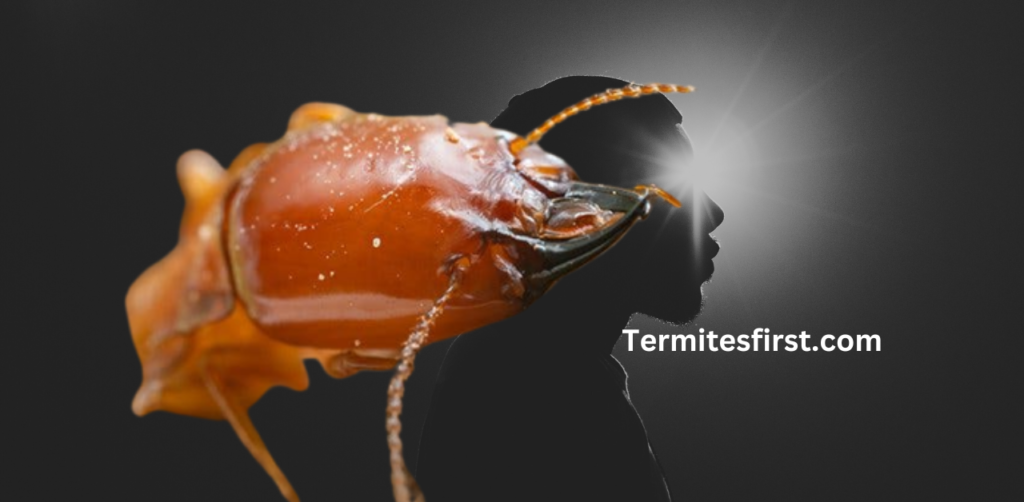
Termites and Colors: Dispelling the Myth of Color Blindness
The captivating world of termites has inspired curiosity among researchers and homeowners alike. One of the fascinating queries is whether termites can see color or if they are colorblind. By shedding light on this topic, we aim to understand termites’ visual perception and their remarkable adaptations comprehensively.
Are Termites Color Blind? Unveiling the Truth About Their Vision
Termites, the unassuming architects of the insect world, have long captivated our imagination with their impressive feats. But what about their ability to see colors? Let’s uncover the mystery behind termites’ visual perception and explore whether they are truly color-blind or if they have a more vibrant view of the world around them. Join us as we reveal the fascinating truth about termites and their relationship with colors.
The Myth of Color Blindness: Are termites color blind?
One common misconception is that termites cannot discern colors, relying solely on other senses. We’ll examine this myth and uncover the reality behind their visual capabilities. Decoding Termite Eyes
Understanding termite eyes is key to determining their color perception. We’ll dive into the anatomy of termite eyes and how it influences their interactions with colors.
Do Termites See in Black and White?
Some believe termites only perceive the world in shades of black and white. We’ll explore whether this notion holds true or whether their visual spectrum is more nuanced.
Colors can have a profound impact on insect behavior. We’ll investigate how colors might affect termites and their roles within the colony.
Evolutionary Adaptations: The Secret to Color Vision?
Unraveling the evolutionary aspects of termite vision can provide valuable insights into their color perception, shedding light on their remarkable adaptations.
The Perception of Blindness
Termites are often associated with darkness and underground habitats, leading to the assumption that they must be blind. However, this perception is not entirely accurate. While termites do not possess eyes like humans or other insects, they have evolved unique adaptations that allow them to navigate their surroundings effectively.
Understanding Termite Vision
Termites rely on a combination of sensory mechanisms to interact with their environment. Their primary means of perception lies in chemoreception, the ability to detect chemical cues through specialized receptors. This chemical sensitivity is crucial in finding food sources, identifying mates, and establishing their intricate colonies.
The Role of Chemical Signals
In their quest for sustenance, termites release pheromones and chemical signals that act as communication tools within their colonies. These pheromones help termites navigate their surroundings, locate food sources, and mark trails for their fellow nest mates to follow. By following these chemical signals, termites can efficiently coordinate their activities and optimize their collective efforts.
Light Perception in Termites
While termites lack the typical compound eyes in many insects, they possess light-sensitive cells known as ocelli.Simple eyes called ocelli are able to sense changes in light intensity but are unable to create detailed pictures. These structures help termites differentiate between light and darkness, aiding them in determining whether they are within their preferred subterranean environment or exposed to light.
Navigational Abilities
Termites exhibit remarkable navigational abilities despite their limited visual capabilities. They can construct complex tunnel systems, build elaborate mud tubes, and navigate through obstacles to locate food sources and expand their colonies. This remarkable feat is primarily achieved through collective behaviors driven by chemical cues and pheromones.
Factors Influencing Termite Behavior
While termites can perceive light somewhat, they prefer to remain in dark and humid environments. Exposure to light can cause desiccation and vulnerability to predators. As a result, termites have evolved to avoid light and adopt behaviors that keep them protected within their intricate underground networks.
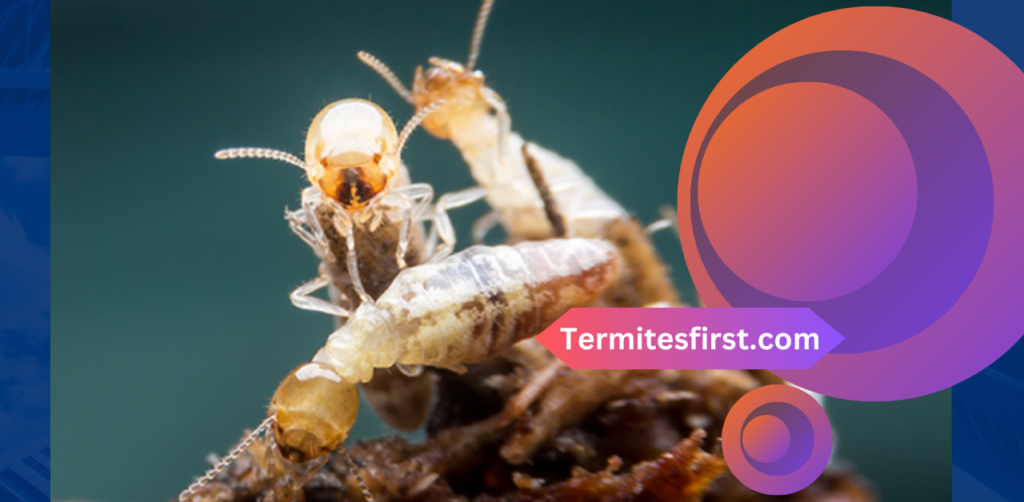
Termites’ Vision Unveiled: Debunking 5 Common Myths About Their Eyesight
Regarding termites, many myths and misconceptions have circulated, leaving homeowners and enthusiasts puzzled about these tiny architects’ vision. Are termites blind, or is their eyesight just misunderstood? In this comprehensive exploration, we debunk five prevalent myths surrounding termites’ visual capabilities. By unraveling the truth, we aim to shed light on these intriguing insects and provide a clearer understanding of their astonishing abilities.
Myth #1: Termites are Completely Blind
Contrary to popular belief, termites aren’t entirely blind. While their eyes may differ from humans, they possess visual organs that allow them to perceive their surroundings. Unravel the mystery behind termites’ unique vision and how it guides their remarkable behaviors.
Myth #2: Termites Rely Solely on Their Sense of Touch
Many assume termites solely depend on their heightened sense of touch to navigate and build intricate structures. However, their visual cues are crucial in colony organization and nest construction. Discover how termites blend sight and touch in their daily activities.
Myth #3: Termites’ Eyesight is Comparable to Humans
It’s a common misconception to equate termites’ eyesight with that of humans. Termites have distinct visual adaptations tailored to their underground habitats. Delve into the fascinating world of termite optics and uncover their unique way of seeing the world.
Myth #4: Termites are Completely Vulnerable in the Dark
Some believe termites are helpless without light, assuming their limited vision hinders them in the dark. However, termites have evolved to thrive in their dark and underground existence. Learn how their eyesight aids them even in the absence of light.
Myth #5: Termites’ Visual Abilities are Universal Across Species
Different termite species exhibit varying levels of eyesight, each with its adaptations tailored to their environment. Explore the diversity of termite vision and gain insights into how these variations impact their behavior and survival.
As we dispel these prevalent myths about termites’ visual capabilities, we uncover the astonishing truth behind their eyesight. Understanding the nuances of their vision empowers us to appreciate these silent builders’ incredible feats and reinforces the importance of termite research in protecting our homes and ecosystems. Join us in unveiling the mysteries of termite vision and embrace a newfound appreciation for these extraordinary insects.
Winged Termites: Do They Lack Vision?
Termite swarmers, or winged termites, are a frequent sight during certain times of the year. Their emergence often raises questions about their visual capabilities. Are Winged termites blind? In this article, we will explore the topic of Winged termite vision and uncover the truth behind their sight abilities.
Winged Termites and Sight Perception: Termites, just like their non-Winged counterparts, possess unique sensory adaptations. While they do not possess traditional compound eyes, their visual abilities should not be underestimated.
The Role of Compound Eyes
Unlike other winged insects, winged termites do not have large compound eyes. Instead, they use a different visual mechanism to navigate their surroundings during their flight phase.
Understanding Ocelli
Winged termites have ocelli, which are tiny, straightforward eyes that are sensitive to variations in light intensity. These ocelli allow them to distinguish between light and dark, providing a basic form of vision.
Navigating in Flight
Although their visual acuity is limited, winged termites utilize a combination of sensory cues to navigate effectively. They rely heavily on their sense of smell and pheromone receptors, guiding them toward potential mates and suitable locations for establishing new colonies.
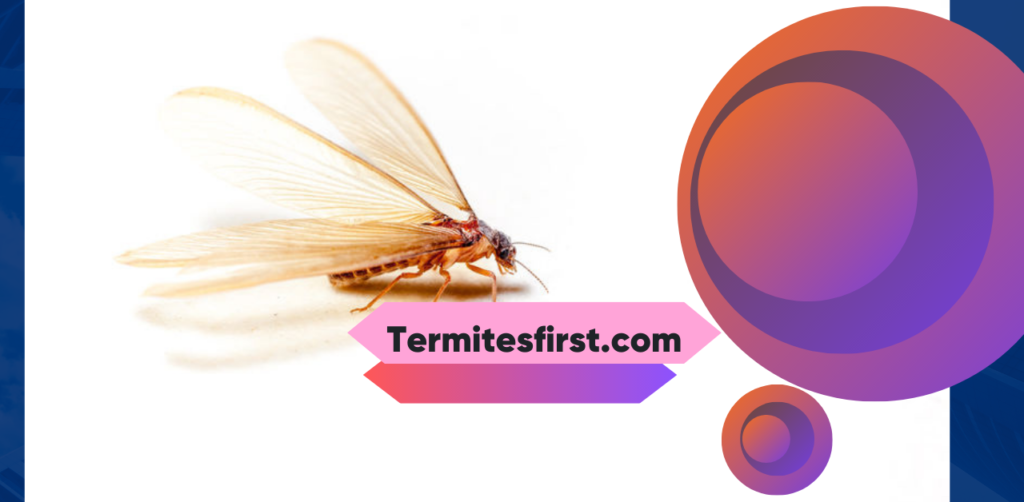
Flight Patterns and Light Perception
Winged termites are attracted to artificial lights, which can sometimes lead them astray and result in them entering homes or buildings. This attraction to light, however, does not necessarily indicate that they possess well-developed vision. Instead, it is an instinctual response that can be utilized for their control and management.
Providing Effective Termite Control Solutions
Understanding winged termite behavior and its attraction to light can help homeowners and pest control professionals devise effective strategies for termite control. By implementing proper lighting measures and seeking professional assistance, one can minimize the chances of infestation.
Conclusion:
In conclusion, the notion that termites are completely blind is a common misconception. While they don’t possess human-like eyesight, termites have visual organs known as compound eyes that allow them to detect changes in light intensity. Their vision may be limited compared to other insects. Still, they have adapted and thrived by relying on other senses, like touch and chemical cues, for navigation and communication within their colonies. Understanding the truth about termite vision provides valuable insights into these incredible creatures and how they interact with their environment. So, the next time you encounter these tiny architects, remember that they may not see the world as we do, but their unique sensory mechanisms make them highly successful in their endeavors.
FAQ’s:
As a human, yes, you can see termites with your naked eye. Termites are small insects, typically measuring around 1/4 to 1/2 inch in length, depending on the species. They are generally pale or light-colored, and their appearance may vary depending on their caste within the colony (workers, soldiers, or reproductive termites).
Termites do not typically bite humans. Termites are not often known to be hostile against people or animals, in contrast to other insects. They mostly seek for cellulose-based foods like wood and plant stuff to eat. Termites can cause significant damage to wooden structures, but their focus is on their food source rather than biting or harming people.
Not all termites have eyes in the traditional sense. While termites possess sensory organs that help them perceive their environment, not all species have well-developed eyes like many other insects.
Yes, certain types of termites, known as “termite swarmers” or “alates,” can fly. Winged termites are reproductive termite colony members who establish new termite colonies. They have wings that they use to leave their current colony in a swarming process.
Termites dislike certain scents like orange oil, neem oil, garlic oil, and tea tree oil. Borate-treated wood, nematodes, and controlling excess moisture can also deter termites.

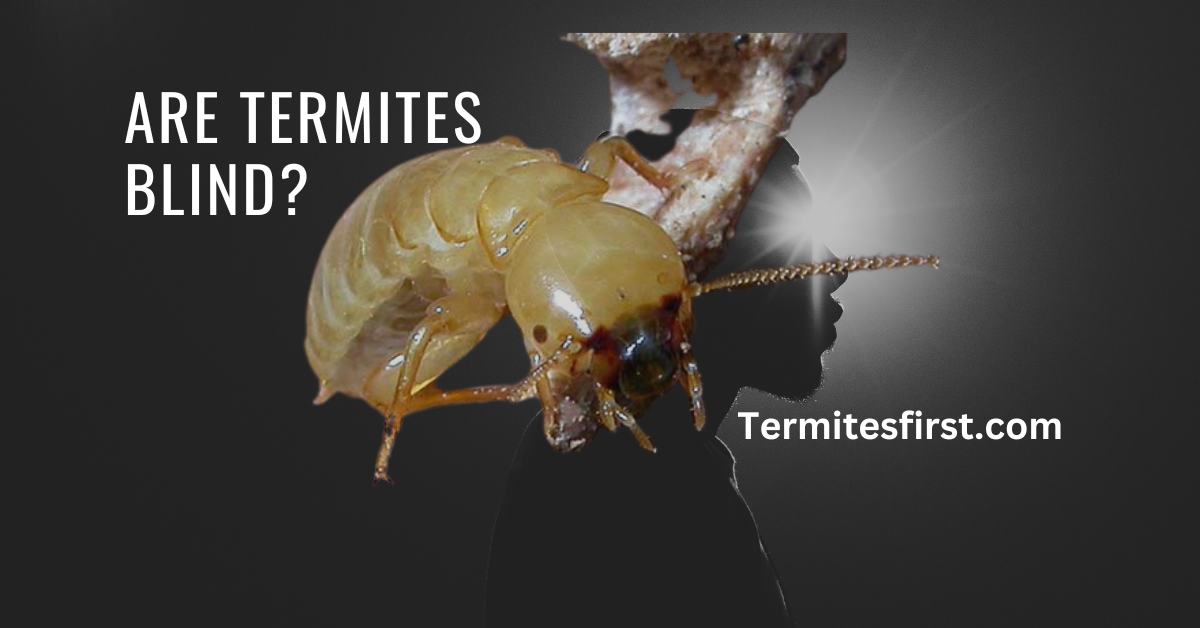
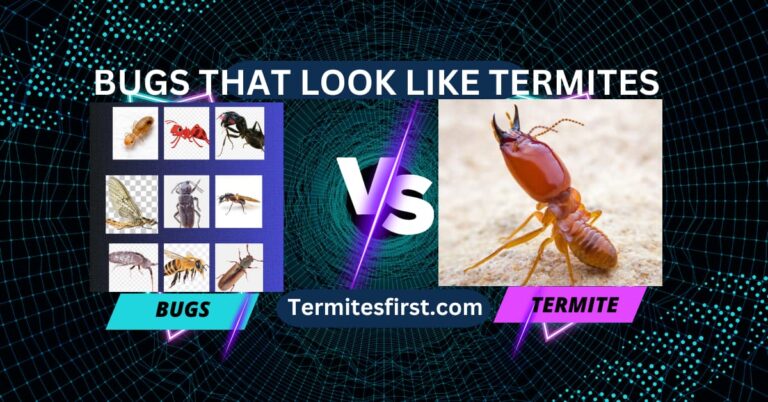

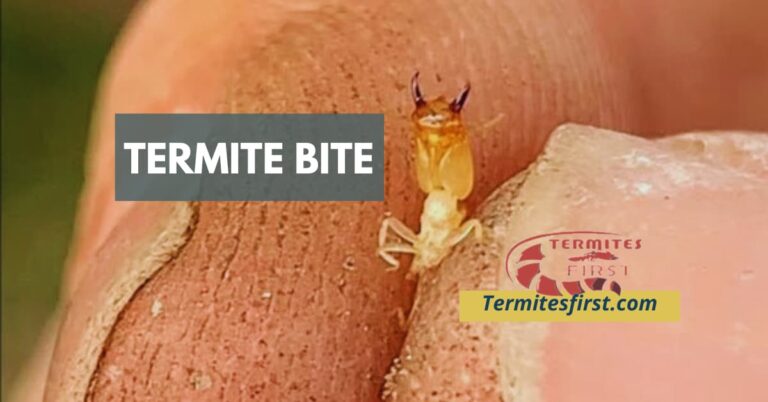

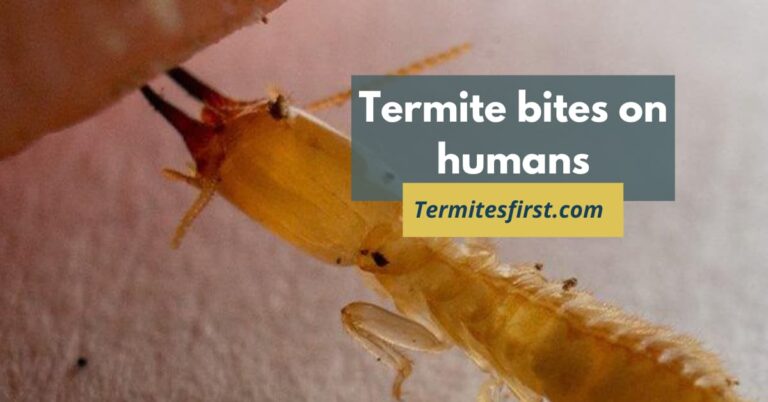

One Comment